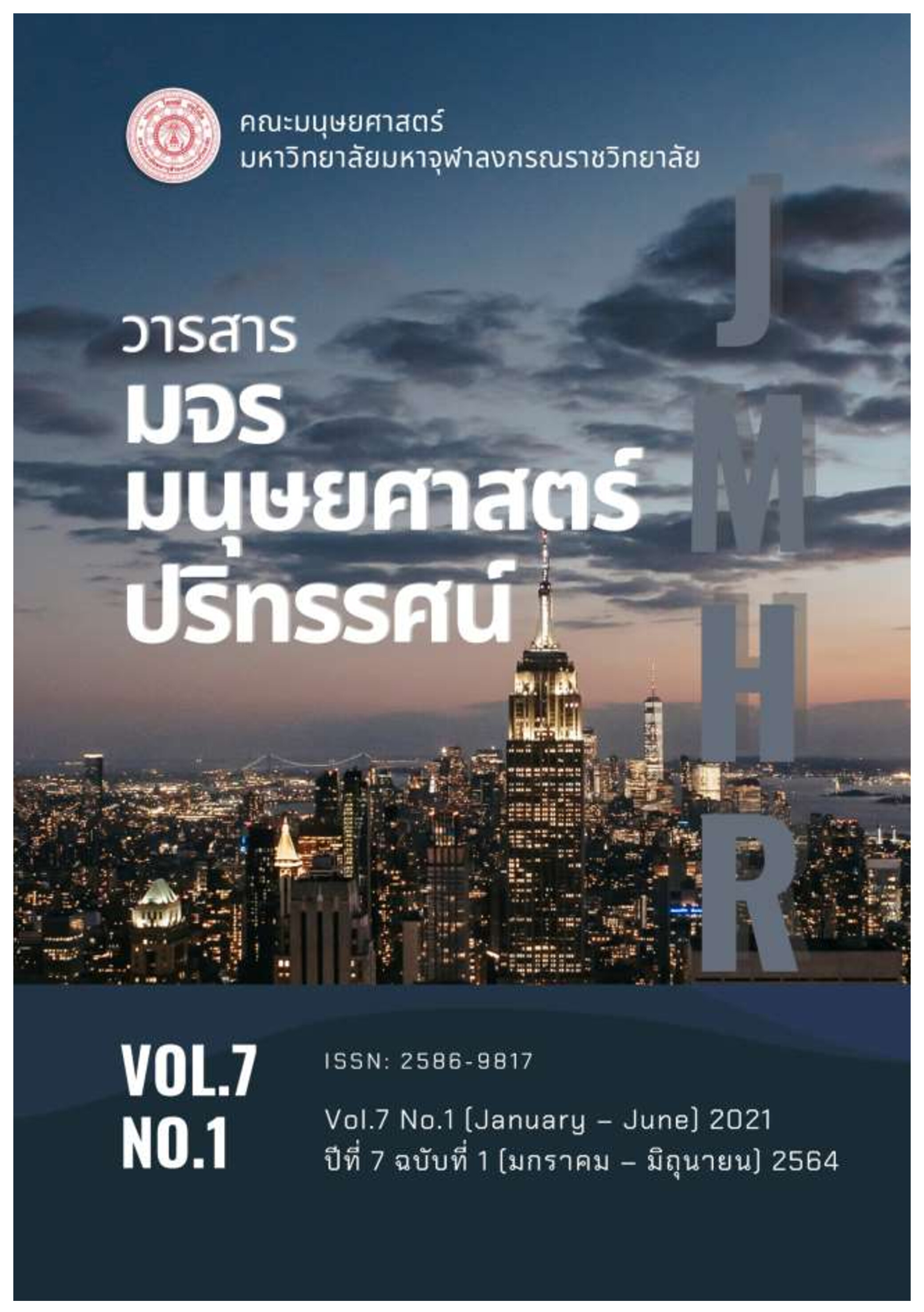รูปแบบการพัฒนาวัดสัปปายะสร้างสุขเชิงองค์รวมด้วยวิถี 5ส ตามแนวพุทธจิตวิทยา
คำสำคัญ:
รูปแบบ, การพัฒนาวัด, 5ส, พุทธจิตวิทยาบทคัดย่อ
การวิจัยนี้มีวัตถุประสงค์ คือ 1) เพื่อศึกษาสภาพปัญหาและแนวคิดของการพัฒนาวัดสัปปายะสร้างสุขเชิงองค์รวมด้วยวิถี 5ส ตามแนวพุทธจิตวิทยา 2) เพื่อสังเคราะห์รูปแบบการพัฒนาวัดสัปปายะสร้างสุขเชิงองค์รวมด้วยวิถี 5ส ตามแนวพุทธจิตวิทยา 3) เพื่อนำเสนอรูปแบบการพัฒนาวัดสัปปายะสร้างสุขเชิงองค์รวมด้วยวิถี 5ส ตามแนวพุทธจิตวิทยา เป็นการวิจัยแบบผสมผสานวิธี คือ เชิงคุณภาพและเชิงปริมาณ แบ่งเป็น 3 ขั้นตอน คือ ขั้นตอนที่ 1 ศึกษาแนวคิดของการพัฒนาวัดสัปปายะสร้างสุขเชิงองค์รวมด้วยวิถี 5ส ตามแนวพุทธจิตวิทยา ขั้นตอนที่ 2 สังเคราะห์รูปแบบการพัฒนาวัดสัปปายะสร้างสุขเชิงองค์รวมด้วยวิถี 5ส ตามแนวพุทธจิตวิทยา ขั้นตอนที่ 3 นำเสนอรูปแบบการพัฒนาวัดสัปปายะสร้างสุขเชิงองค์รวมด้วยวิถี 5ส ตามแนวพุทธจิตวิทยา
สภาพปัญหาและแนวคิดการพัฒนาวัดสัปปายะสร้างสุขเชิงองค์รวมด้วยวิถี 5ส ตามแนวพุทธจิตวิทยา พบว่า จุดแข็ง คือ เป็นสำนักปฏิบัติวิปัสสนากรรมฐานประจำจังหวัดศรีสะเกษ จุดอ่อน คือ ทำงานไม่เป็นระบบ ปัญหา/อุปสรรค คือ ขาดการประชาสัมพันธ์เกี่ยวกับกิจกรรมที่ทางวัดจัดขึ้น โอกาส คือ มีลูกศิษย์อุปถัมภ์ค่าใช้จ่ายในการพัฒนาวัด
สังเคราะห์รูปแบบการพัฒนาวัดสัปปายะสร้างสุขเชิงองค์รวมด้วยวิถี 5ส ตามแนวพุทธจิตวิทยา คือ 1) ด้านกิจกรรมสถานที่สร้างสุขเชิงองค์รวม 2) ด้านกิจกรรมสังคมสร้างสุขเชิงองค์รวม 3) ด้านกิจกรรมจิตใจสร้างสุขเชิงองค์รวม 4) ด้านกิจกรรมปัญญาสร้างสุขเชิงองค์รวม โดยคุณภาพของรูปแบบการพัฒนาวัดสัปปายะสร้างสุขเชิงองค์รวมด้วยวิถี 5ส ตามแนวพุทธจิตวิทยาโดยรวมอยู่ในระดับมาก ( = 4.08) หลัก 5ส มีความสัมพันธ์กับความสุขเชิงองค์รวม อย่างมีนัยสำคัญทางสถิติที่ระดับ 0.01
นำเสนอรูปแบบการพัฒนาวัดสัปปายะสร้างสุขเชิงองค์รวมด้วยวิถี 5ส ตามแนวพุทธจิตวิทยา การบริหารและจัดการวัดด้วยวิถี 5ส ที่ดีมีคุณภาพมาก ทั้งนี้โดยการบูรณาการเข้ากับปัจจัยทางพุทธจิตวิทยา ซึ่งประกอบด้วย หลักธรรมสัปปายะ 7, หลักธรรมภาวนา 4, หลักการบริหารวัด 4, และหลักจิตวิทยา คือ แรงจูงใจใฝ่สัมฤทธิ์ 2 ประกอบด้วย แรงจูงใจภายนอกและแรงจูงใจภายใน ซึ่งส่งผลต่อความสุขเชิงองค์รวม 4 คือ สุขกาย, สุขสังคม, สุขอารมณ์ และสุขปัญญา ชื่อว่า “วัดสร้างสุขโมเดล : 574424”
เอกสารอ้างอิง
พระราชวรเมธี และคณะ. (2560). แผนยุทธศาสตร์การปฏิรูปกิจการพระพุทธศาสนา 2560-2564 “การนำนโยบายสู่การปฏิบัติ”. สืบค้น 15 มกราคม 2564, จาก http://www.buddhism4.com/web/download/book%201.pdf
พระครูปลัดสราวุธ ฐิตปญฺโญ และคณะ. (2560). การพัฒนาวัดเพื่อเป็นศูนย์กลางการเรียนรู้ของชุมชนในจังหวัดชลบุรี. วารสาร มจร สังคมศาสตร์ปริทรรศน์, 6(2), 505-506.
พระมหาธัชธร สิริมงฺคโล. (2556). การจัดการการท่องเที่ยวเชิงพุทธของวัดหนองแวง (พระอารามหลวง) อำเภอเมือง จังหวัดขอนแก่น (วิทยานิพนธ์พุทธศาสตรมหาบัณฑิต). มหาวิทยาลัยมหาจุฬาลงกรณราชวิทยาลัย. พระนครศรีอยุธยา.
พระมหาเสงี่ยม สุวโจ. (2562). รูปแบบการพัฒนาวัดสร้างสุขด้วยสัปปายะตามแนวพุทธจิตวิทยา (วิทยานิพนธ์พุทธศาสตรดุษฎีบัณทิต). มหาวิทยาลัยมหาจุฬาลงกรณราชวิทยาลัย. พระนครศรีอยุธยา.
พระอธิการคำมั่น อินฺทวณฺโณ, (25 กันยายน 2563). ผู้ช่วยเจ้าอาวาสวัดหนองเชียงทูน. สัมภาษณ์.
ภัชรบถ ฤทธิ์เต็ม. (2558). รูปแบบการจัดการท่องเที่ยวเชิงศาสนาและวัฒนธรรมในวัด. วารสารศิลปศาสตร์ มหาวิทยาลัยอุบลราชธานี, 11(1), 1-23.
pimchanok. (2556). ธรรมะช่วยเสริมสุขภาพจิตแก้ปัญหาวัยรุ่น. สืบค้น 20 มกราคม 2564, จาก https://www.thaihealth.or.th/Content/3154ธรรมะช่วยเสริมสุขภาพจิตแก้ปัญหาวัยรุ่น.html
สมเด็จพระพุฒาจารย์. (2556). คัมภีร์วิสุทธิมรรค พระพุทธโฆสเถระ รจนา (พิมพ์ครั้งที่ 11). กรุงเทพฯ : ธนาเพลส.






